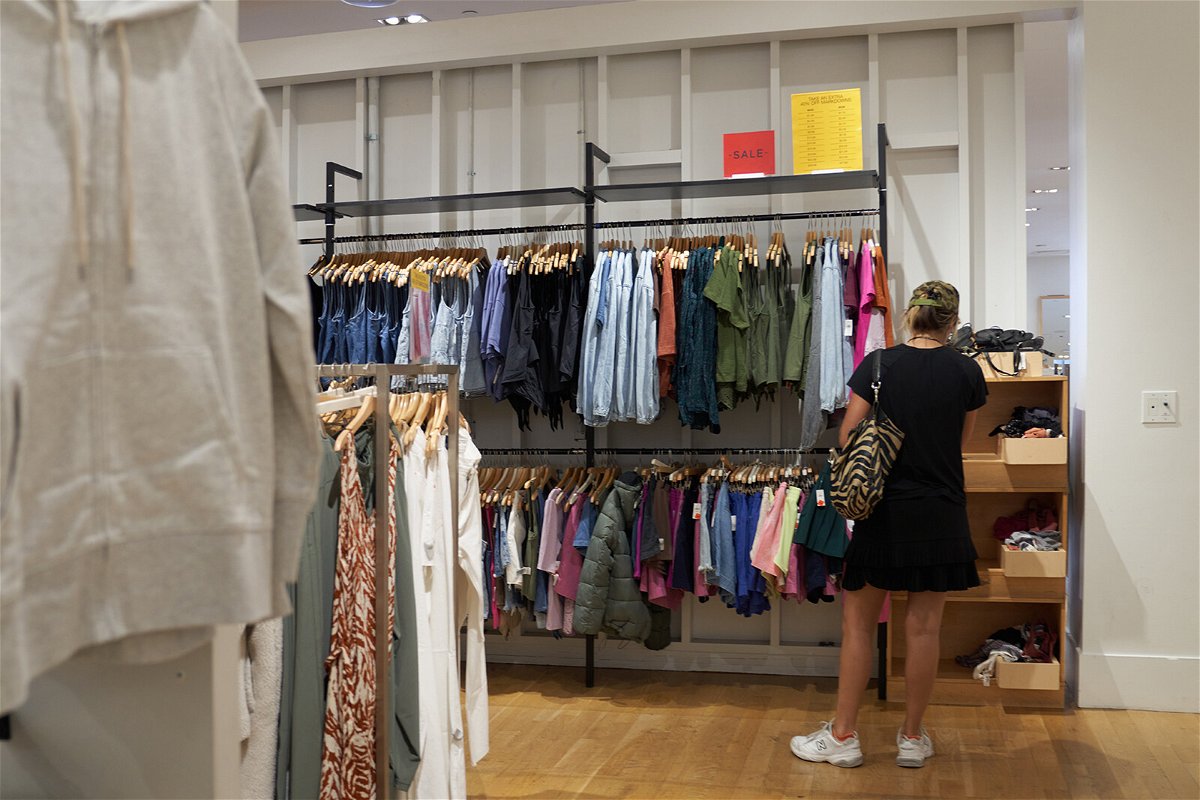Retail sales surged by 1.3% in October as consumers continue to spend despite inflation

Retail sales surged by 1.3% in October. A woman shops at a Gap store on September 20
By Alicia Wallace, CNN Business
American shoppers spent more in October, showing continued resilience amid persistently high inflation and an early start to the holiday shopping season.
US retail sales rose 1.3% in October, the Census Bureau reported Wednesday.
That’s the biggest monthly gain since February and better than the 1% economists had expected. Consumer spending was flat in September.
Retail sales, which are not adjusted for inflation, were up 8.3% for the 12 months ended in October, slightly down from September’s 8.6%.
Consumer spending increased on items such as gas, groceries, furniture and cars, but shoppers pulled back on spending at electronics and appliance stores, sports goods retailers and department stores, according to the report.
For much of the year, despite short-term spikes in gas prices and decades-high inflation, consumer spending has remained robust.
The October retail sales report shows the pent-up desire to shop that was caused by the pandemic remains strong, said Eugenio Aleman, chief economist for Raymond James.
“The fact that they were limited in their consumption alternatives before, for almost three years, is having a big impact on consumers’ decisions to continue to spend,” Aleman said.
But to fund that spending, which has started to become more heavily geared toward experiences versus goods, consumers have leaned more heavily on debt. The New York Federal Reserve reported Tuesday that consumer credit card balances grew by 15% year over year in the third quarter — the highest in more than 20 years.
But as the central bank hikes interest rates in its efforts to bring down stubbornly high inflation, that takes a toll on consumers, said Gregory Daco, chief economist for EY Parthenon. Consumer sentiment has fallen in recent months.
“It’s becoming increasingly evident that households’ budgets are being stretched by persistently elevated inflation, forcing many to dip into their savings and use credit to finance outlays,” he wrote Wednesday. “This is by no means sustainable, especially for families at the lower-to-median end of the income spectrum. Hence, while aggregative excess savings remain elevated around $1.5 trillion, we expect we will soon see a notable pullback in consumer spending activity under the weight of inflation and elevated interest rates.”
Still, the strength of consumer spending, while good for the economy, could present challenges for the Fed.
“Even after adjusting for inflation, consumers are spending more,” Wells Fargo economists Tim Quinlan and Shannon Seery wrote in a note. “It is tempting to cheer on the ‘resilience’ of the consumer, but the staying power of spending gives businesses no incentive to forgo price increases, thereby making the task of getting inflation in check more difficult for policymakers.”
The October retail sales report comes amid a slew of consumer-related economic data and retailer earnings reports ahead of the holiday shopping season.
Two key inflation gauges, the Consumer Price Index and the Producer Price Index both showed price increases have been cooling.
“The inflation relief consumers received in October that we saw in last week’s CPI report extended to this morning’s retail sales numbers,” said Scott Brave, head of economic analytics at Morning Consult.
While inflation appears to have peaked, consumers’ behaviors have shifted, Claire Tassin, Morning Consult’s retail and e-commerce analyst, said during an interview Wednesday.
“Everyone is more price sensitive lately,” she told Christine Romans, CNN Business’ chief business correspondent. “People are certainly changing the stores that they shop in, so I can absolutely see wealthier shoppers shopping at Walmart often, especially … to access some of those lower prices than maybe at other stores they would traditionally shop at.”
On Tuesday, Walmart reported its US sales had increased 8.2% last quarter from the year before. The discount retailer noted it was making “strong grocery share gains,” including from high-income households.
However, earlier on Wednesday, Target said its profit plunged 52% last quarter and revenue rose by just 3.4% as consumers started to feel the heat from inflation. The retailer warned of a sluggish holiday season ahead as shoppers hold out for bargains.
The-CNN-Wire
™ & © 2022 Cable News Network, Inc., a Warner Bros. Discovery Company. All rights reserved.